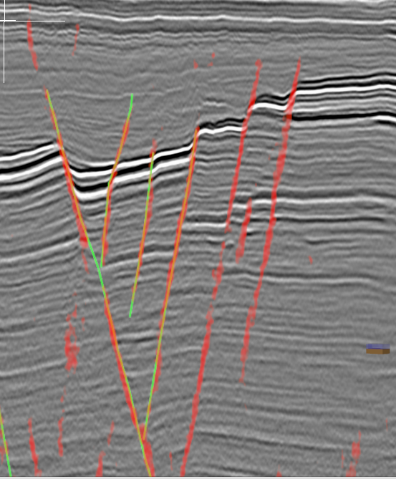Online Only, you must pre-register to receive access instructions.
NOTE: You Must Be Logged In to Register.
Speaker: Bode Omoboya, Bluware
Using a combination of already available software innovations that include data compression, random data access and an optimized Convolutional Neural Network (CNN), interactive deep learning is within the reach of the interpreter. The deep neural network acts as an extension of the interpreter to assist in mapping sub-surface geological features, like faults using single amplitude or co-rendered attribute volumes. Deep learning approaches with sophisticated neural network architecture has a lot of promise when applied to these tedious seismic imaging and interpretation tasks (LeCun et al., 2015; Bandura et al., 2018). We present an interactive approach to machine learning with training and inference in real-time to assist interpreters in tedious tasks such as fault mapping. In this scenario, the disadvantage of rigorous data preparation is circumvented. The additional burden of intensive QC is avoided, as the interpreter can keep training until the desired inference is reached.
In a fault detection scenario, the mathematical approach is a binary classification. The areas where there is no fault will be classified as zero and areas with faults as one. The most optimal input to the CNN requires the following:
1) Patches from the seismic (features) and input label by the interpreter.
2) Random access to the seismic features and interpreter label pairs. The latter must be truly three-dimensional.
3) Equal and sequential number of truth and non-truth samples.
We present a custom deep learning model that reduces the dimension between the features (seismic data) and labels (interpreter input). This reduction also uses “valid padding” during the convolutions in order to get as much information as possible for the CNN computation. This deep learning model was designed to have a small number of layers that allows for fast and accurate results. We can operate it interactively, giving speedy responses to the interpreter. The loss function is also built to give positive feedback to the network. In a fault mapping scenario, an interpreter loads a seismic volume and enables deep learning. In this exercise, human interpretation is colored in green, while machine prediction is red. Interpreter picks the first few fault sticks. The deep learning network interactively adapts to the relatively little training and starts prediction.

Figure: Deep neural network interactively predicts and produces inference (in red) as interpreter continues mapping.
The deep learning methodology presented here acts as an extension of an experienced seismic interpreter. The interpreter keeps training and observing the inference in real time until the result is desirable. These tools have a potential to eventually become enablers for day-to-day E&P operations, ultimately improving interpretations while helping to reduce human error.
Speaker Biography: Bode Omoboya, Bluware
Bode Omoboya, Geoscience Advisor at Bluware, is a geophysicist with nearly 10 years of experience in seismic imaging, AvO and interpretation. Mr. Omoboya received a Master of Science and PhD in geophysics from the University of Houston. His research interest includes deep learning assisted seismic imaging and interpretation. He is currently working in deep learning research and development at Bluware.
** Please be aware that the Checkout process has changed, due to the charge for non-members. ALL registrations must go through the 'Checkout', even if you are a member and your total is zero. Please remember to Submit your registration and go to Checkout to complete the registration process.
Price List:
|
Pre-Registered |
Member
|
Free |
| Non-Member |
$10 |